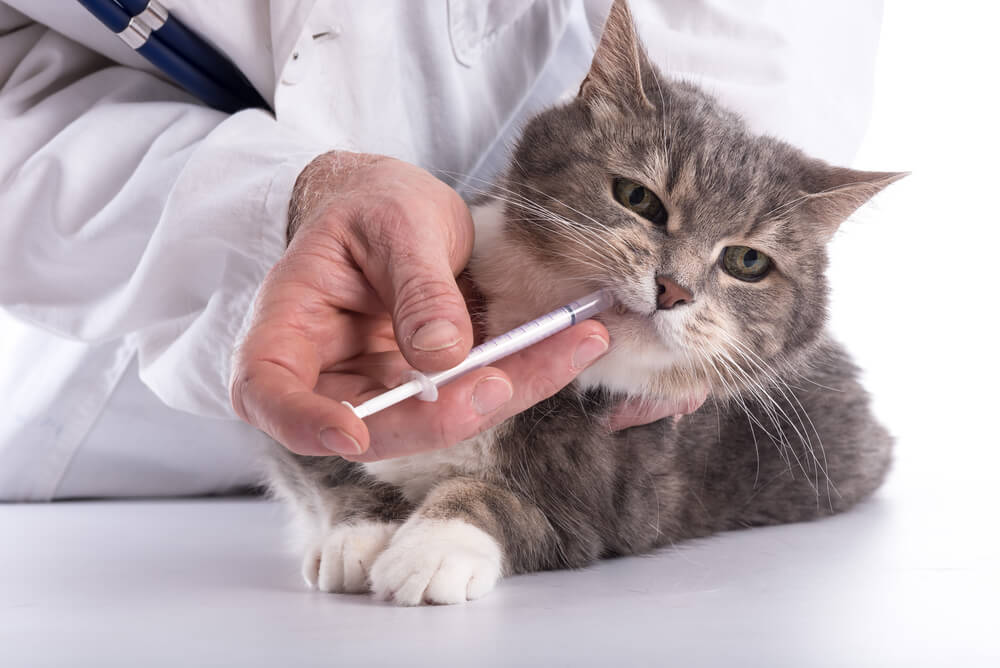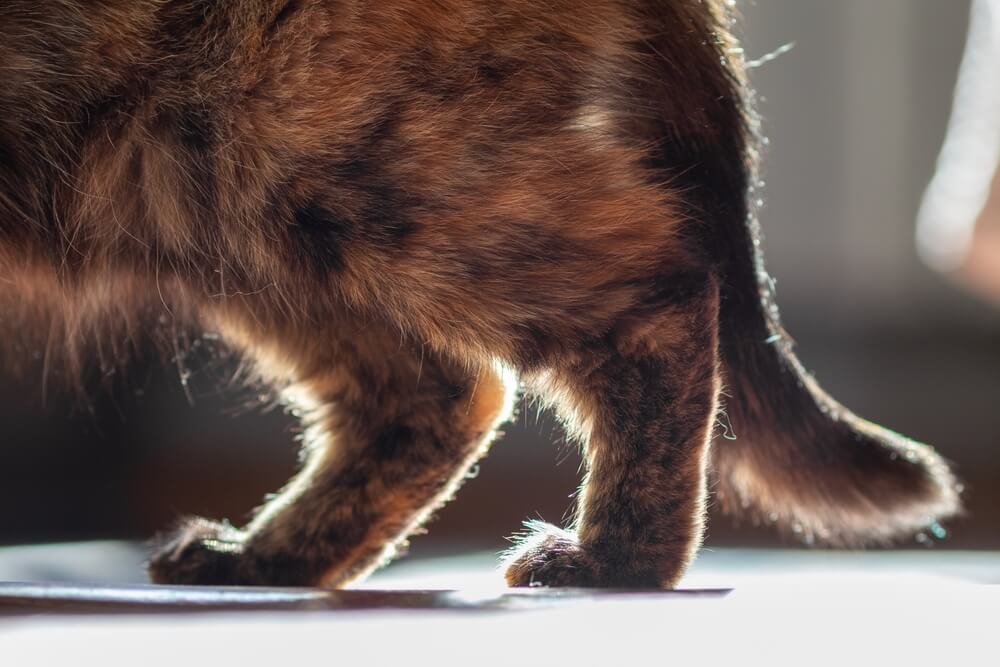Osteoarthritis is a well-known and prevalent disease in dogs, but until recently, was less commonly diagnosed in cats. However, veterinarians are now more aware of the prevalence of osteoarthritis in older cats. The increase in osteoarthritis diagnoses in cats has led to increased awareness, prevention, and pain management, which help cats lead happier, healthier lives.
Because cats don’t often show their physical pain, many owners don’t realize their pet is suffering from arthritis pain. Whether or not your cat has been diagnosed with arthritis, knowing what causes this degenerative joint condition, and how you can prevent the painful problem, is important for your feline friend’s future health, happiness, and mobility.
What is arthritis in cats?
Arthritis is a painful joint inflammation caused by progressive cartilage degeneration. In normal joints, the cartilage acts as a shock absorber and prevents the two bone surfaces from rubbing. In arthritic joints, the cartilage has deteriorated because of repetitive stress, trauma, disease, or normal wear and tear. The bones begin rubbing together, their surfaces become rough, grind against each other, and cause more pain and inflammation. Arthritis is most frequently seen in the hip, elbow, knee, wrist, and lower back, but can occur in any joint. Osteoarthritis pain can affect cats of all ages, especially those 6 years of age or older.
Are some cats at a higher risk for arthritis development?
If your cat falls into one of the following categories, or has one of the following conditions, they may be more likely to develop arthritis:
- Overweight or obese
- Large or giant breed
- Long-bodied with short legs
- Extremely active
- History of trauma (e.g., fractured leg)
- Hip or elbow dysplasia
- Luxating patellas
- Joint infections
What are arthritis signs in cats?
Arthritis signs in cats can be subtle until the disease advances and causes significant pain and mobility issues. Cats don’t generally show their pain, which makes detecting early signs of their pet’s condition difficult for owners. Behavior changes, such as the following, could indicate osteoarthritis and pain.
- Trouble climbing up and downstairs — A cat with joint pain may “bunny hop,” using both back legs at the same time and angling their body sideways when going up stairs. They will slowly descend one step at a time when going down stairs.
- Increased breaks while playing — If your cat is usually quite active and spry when playing, and you notice them slowing down or pausing often during play sessions, this may be an indication of osteoarthritis joint pain.
- Hesitation when jumping up and down — A sign of osteoarthritis pain can be hesitation when jumping on and off surfaces. Your cat may not clear their jumps in one leap, and use their arms to pull themselves up, or reach down to the ground instead of taking one, big leap when jumping down.
- Decreased speed when walking and/or running — If your cat is moving more slowly than normal and/or with their back feet angled together, this could indicate they are compensating for osteoarthritis pain.
- Personality changes — Chronic pain negatively impacts your cat’s emotional state, as well as their physical state. If you notice your cat isn’t as social as usual, or they are relieving themself outside their litter box, they may have osteoarthritis.
Speak with your veterinarian if your cat shows any behavioral changes.
How is arthritis in cats diagnosed?
The key to successful arthritis management in your cat is early diagnosis. However, diagnosing osteoarthritis in cats can be difficult, since cats, unlike most dogs, can tolerate bone and joint problems because of their small size and natural agility. Your observations are essential, and should be shared with your veterinarian.
If Dr. Nieman suspects your cat has arthritis, he will perform an orthopedic exam, in addition to a standard physical exam. Blood work and tick-borne illness testing may also be necessary, to rule out infections that could be causing any stiffness and decreased mobility. In some cases, X-rays or advanced imaging performed at a specialty hospital may be needed, to assess soft tissue structures and joint changes.
How is arthritis in cats treated?
Since arthritis is a progressive condition, early diagnosis and treatment are essential. The disease cannot be cured, but can be managed successfully, granting your cat a good quality of life. Arthritis management options include:

- Pain-relieving medications — Nonsteroidal anti-inflammatories (NSAIDs) are often the first line of defense for arthritis pain relief. Other options may include steroids or opioids, but many cats do well with long-term NSAID use. However, these medications can have side effects, so close monitoring of your pet’s health is essential.
- Weight management — One of the best ways you can help reduce your cat’s arthritis pain is by managing their weight, because each additional pound contributes excess pressure on sore joints.
- Appropriate exercise — Exercise is crucial for keeping muscles strong. Keep your cat active by initiating regular play sessions with a feather on a string, a mechanical mouse, or a good ol’ cardboard box.
- Joint supplements — High-quality joint supplements that contain ingredients such as glucosamine, chondroitin, and green-lipped mussel, are great for reducing joint inflammation and supporting joint cartilage health.
- Alternative therapies — Alternative therapies, such as acupuncture, chiropractic care, hydrotherapy, and laser therapy, are an effective complement to traditional Western surgical and pharmaceutical treatments.
Multimodal treatment is the best, most effective method of arthritis management. As the disease progresses, other therapies may become better options for keeping your cat comfortable and mobile.
Arthritis is a painful, progressive condition that responds best to early diagnosis and treatment. If you notice your feline friend slowing down or struggling to jump, contact Neighborhood Vets Mobile Care for an appointment—we have some new ideas to help them feel better.

